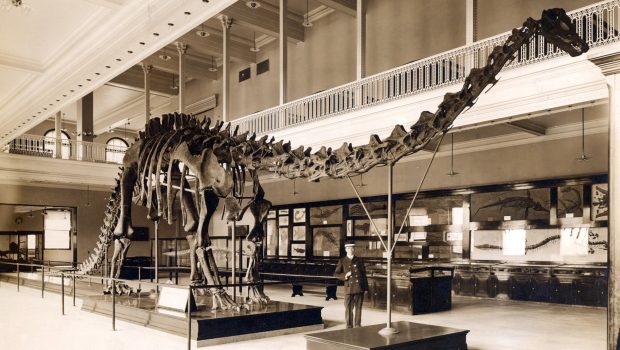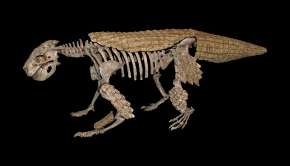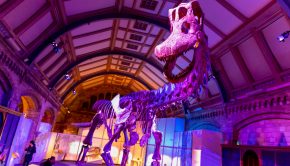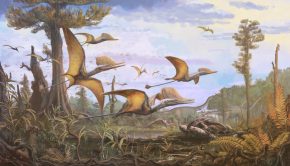Episode 157: The Carnegie Diplodocus
Originally mounted in 1907, the Carnegie specimen is the best example of the sauropod dinosaur Diplodocus, and perhaps the most famous dinosaur skeleton in the world. Casts of the specimen, including the London example known as “Dippy”, were distributed around the world during the early 1900s, and a final concrete cast was even created in 1957 for the Utah Field House at Vernal.
Although the moulds used to create these casts were lost sometime during the 1960’s, new ones created from the concrete skeleton have allowed second generation casts to be made, with some elements being incorporated into other iconic mounts.
This interview is based on a presentation given by Mike Taylor at SVPCA 2023, available to watch on the SVPOW blog.
The three relevant papers are also available to read here:
https://doi.org/10.31711/giw.v10.pp65-91, https://github.com/MikeTaylor/palaeo-carnegie, https://github.com/MikeTaylor/palaeo-baromount.
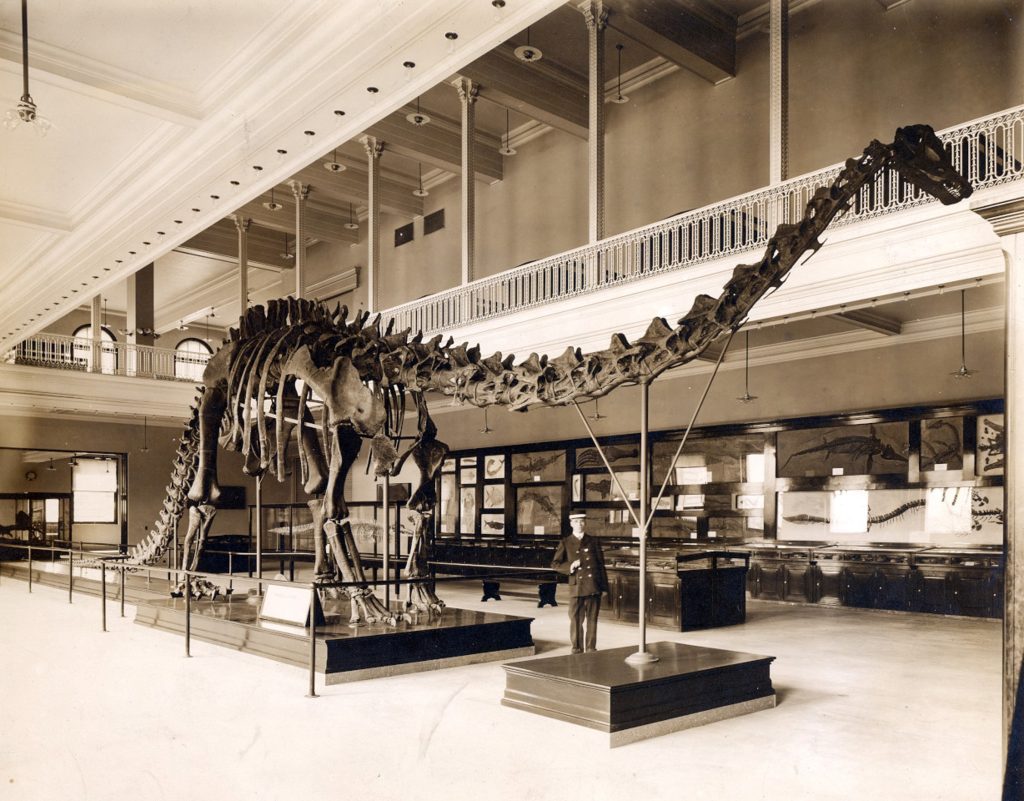
The Carnegie Diplodocus itself is mostly made up of the specimen CM 84, which is considered the holotype for the species Diplodocus carnegii. The specimen was found at Sheep Creek, Wyoming in 1899, on an expedition funded by the Carnegie Museum.
The skeleton (pictured above) was mounted in 1907 at the Carnegie Museum in Pittsburgh, where it can still be visited today.

Throughout the early 1900s, ten casts of the original skeleton were sent to well-known museums around the world, with the intention of fostering positive international relations.
The first of these to be unveiled was the London cast, which was put on display in 1905, two years before the mounting of the Carnegie skeleton itself.

The original skeleton contained real fossil material from four separate specimens, with casts and sculptures being taken from an additional six sauropod specimens, most notably to reconstruct the skull, forelimbs and forefeet.

No skull was preserved in the specimen CM 84, prompting the creation of a composite using sculptures from two different diplodocid specimens, CM 662 and USNM 2673. Pictured above is the skull of the Paris mount, which was first displayed in 1908 and has since been replaced by a single skull cast, taken from CM 11161. However, no records of this change survive today.

If you take a close look at the humeri featured on the earlier mounts, you’ll find that the left (right pictured above) is much shorter and stockier than it’s counterpart. This is due to the shorter left humerus originating from a Camarasaurid specimen, AMNH 5761, which has since been replaced with a more accurate Diplodocid example.

The original forefeet of Carnegie Diplodocus were also taken from a Camarasaurid specimen, AMNH 965. Not only were the bones themselves inaccurate, but they were also displayed in a splayed posture, as can still be seen in the Paris (pictured, left) and London mounts.
Many mounts have since been changed for accuracy. For example, the Humbolt Museum in Germany has simply corrected the posture of the Camarasaurid feet already on display, while other museums have found more accurate replacements. For instance, the skeleton at Carnegie Museum itself now features casts from the specimen WDC-FS001A (pictured, right), which are likely more accurate.
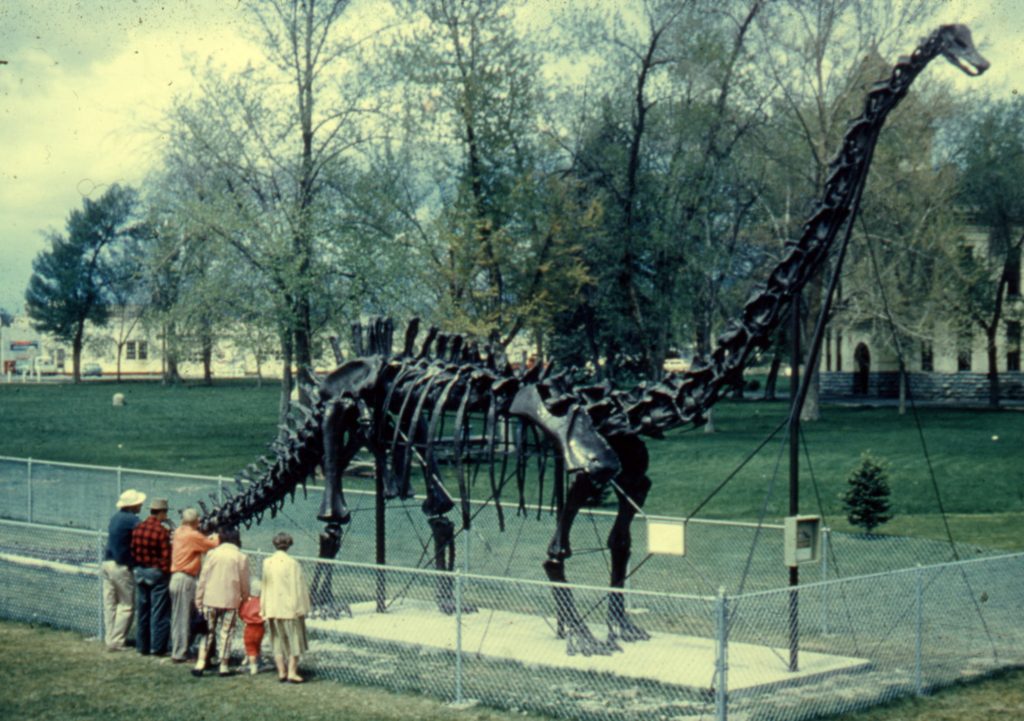
A final cast from the original moulds was created in concrete, to be displayed outside the Utah Field House at Vernal between 1959 and 1989. The moulds were then sadly lost or destroyed at some point during the 1960s, after being sent to Rocky Mount, North Carolina.
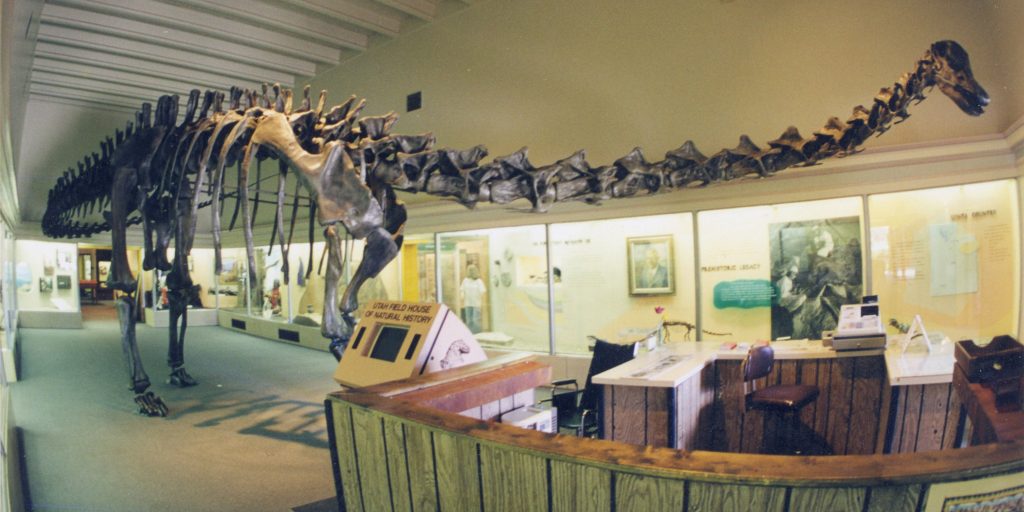
In 1989, the now decaying concrete casts were repaired and stabilised by Dinolab, so that they could be used to create new concrete casts. New elements were then cast in lightweight plastic, which are now displayed indoors at the Utah Fieldhouse Museum.
The concrete casts have since been sent to the Prehistoric Museum in Price, Utah, where they have recently been put on exhibit.
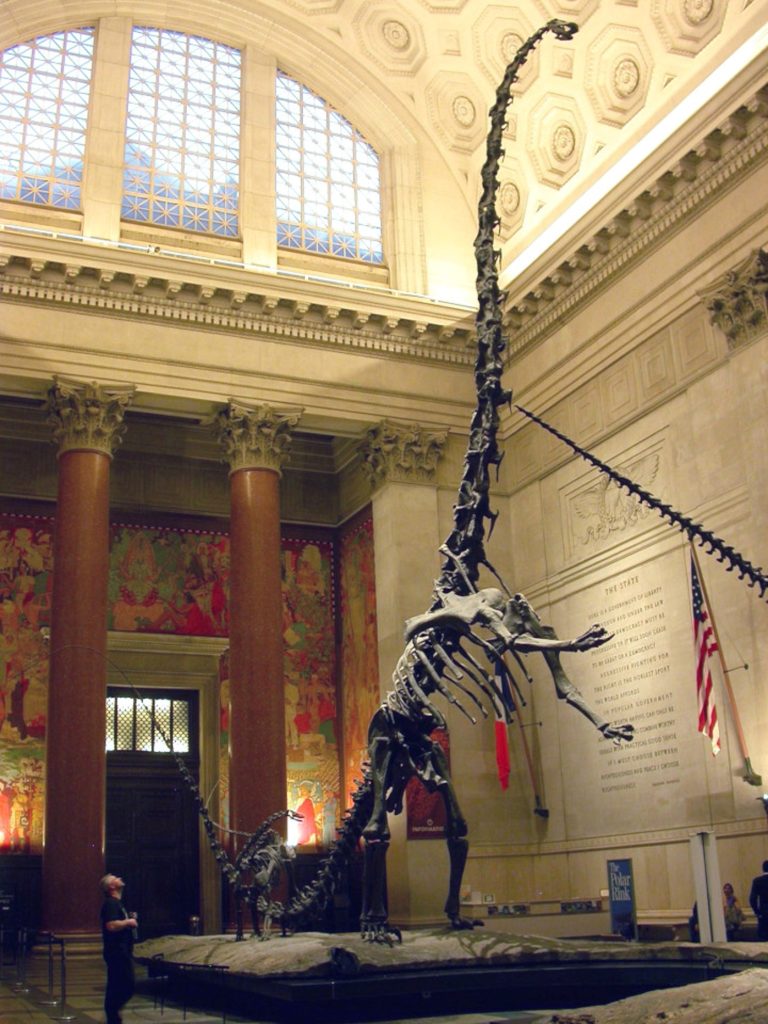
Since the creation of these new moulds, several second-generation casts have been created and sent, once again, around the world.
Furthermore, elements cast from the new moulds have been used in various mounts. For instance, the iconic, rearing Barosaurus mount in the atrium of the American Museum of Natural History (pictured) includes many elements cast from the concrete Carnegie Diplodocus mount at Vernal.
Through the collaborative efforts of numerous individuals and institutions spanning over a century, the Carnegie Diplodocus stands today as arguably the most recognised dinosaur skeleton worldwide.

